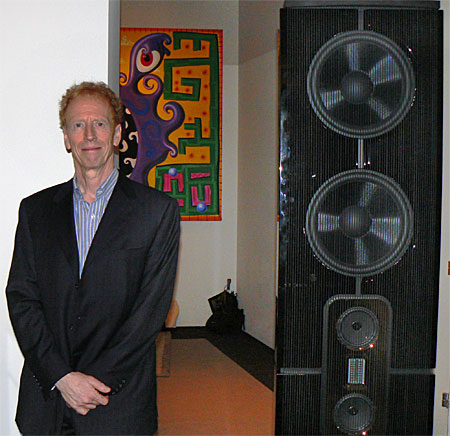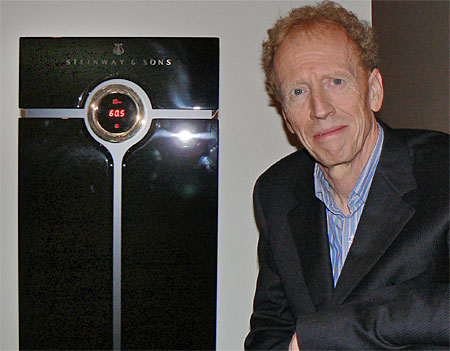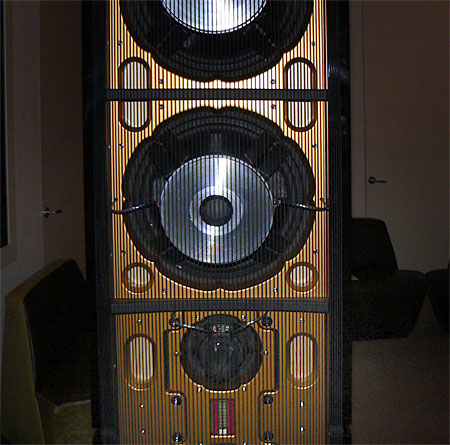| Columns Retired Columns & Blogs |
Steinway and Peter Lyngdorf Create Monumental System
It's not that we're jaded, but most mornings as we open the day's press releases, we manage to curb our enthusiasm as we read of the breakthroughs du jour. Yet, when we read that Steinway & Sons and Peter Lyngdorf had collaborated (as Steinway Lyngdorf) on a $150,000 "Steinway & Sons Model-D Music System," we knew we had to hear it.

Lyngdorf is well known to audiophiles, of course, for his work at NAD, Tact, and Millenium—he is obviously a man to be reckoned with. And Steinway must be fully committed to a system to name it after its D-model concert grands, considered by many music lovers to represent the gold standard of concert hall pianos. Still, the press release had the troubling term "A/V system" in it, so we were a little leery.
In response to an email query, however, Evins Communication's Meegan Insley immediately invited me into NYC to meet Lyngdorf and Steinway Lyngdorf's chairman Steen Lohse, and to get up-close and personal with the Model-D Music system.
I was so there.
It's an imposing sight. The central pedestal contains a CD player and the guts of the RoomPerfect DSP-based room EQ. The two dipole speaker towers are 7' tall and milled out of 890lbs of aluminum ("as much as an Audi 8," Lyngdorf observed). The speakers and pedestal are finished in black piano lacquer at Steinway's Hamburg factory (the backs of the dipole towers are finished in Steinway bronze, to resemble a D-model's frame).
"Do you know why we have the finish done in Hamburg?" Lyngdorf asked. "It's because they have no sense of humor. They take this stuff very seriously." He saw me attempt to photograph the gear. "You can't do that, you know—the finish is too perfect, it'll reflect highlights into your camera." He was right.

The speakers have four 12" carbon-fiber woofers each and two 5" midrange units. A Heil ribbon tweeter handles the highs. Each speaker module has its own amp tower, with two 400W Equibit-based digital amps and an active digital crossover. The signal is kept digital up to the amplifier's output—after the DAC, the only thing between the amp and the speaker is a single cap and a solitary coil.
At the front-end, Red Book signals are up-converted to 192kHz/24-bit and linked to a master clock. "It allows us to run digital attenuation with no loss of data," said Lyngdorf. "We use CAT-6 cable to connect the speakers to the main module, which is easy to run and easy to hide."
Installation is included, as is room measurement and EQ. "It's all inside the pedestal," Lyngdorf said. "We average the sound for the main listening position and then randomly all over the room. The system sounds good wherever you sit."
"Would you like to listen? Let's start with a recording of . . . a Steinway D!"
Wow! Dynamically and tonally, it was spookily realistic. "Just as a point of reference, how much does a Steinway D cost?"
"About $105,000," Lohse said.
"That means this system is 150% Steinway," Lyngdorf zinged.
"Here, listen to a symphony orchestra!"
Holy moly! It was huge—and holographic.
"Here, walk around to the other side of this floating wall between the speakers—the imaging is almost as good as in the sweet spot." Damned if it wasn't.

I looked around the room. The floating wall, the metal 18' ceiling, one curved wall, one offset wall, no soft furniture . . . . "Tough room," I said. "How long did it take you to set up and tune it in?"
"Oh, they wouldn't let us in here before 7am this morning, so we moved the system in, took our measurements, and had 15 minutes to drink coffee before you were due at 8am," Lyngdorf said.
If there was ever a two-channel system that could deliver the audiophile goods in a package that might excite music lovers who'd never go near conventional high-end gear, it's this one. Easy to use and exciting to listen to, it's good enough to make Steinway synonymous with "music."
Whether you're approaching it as a Steinway or as a hi-fi, the Steinway & Sons Model-D Music System is the real deal.
- Log in or register to post comments




































